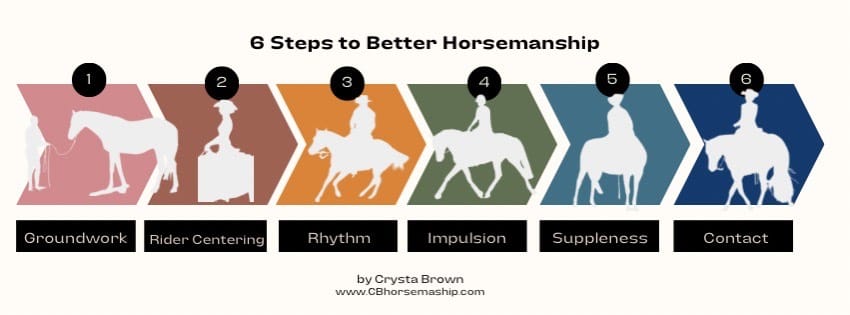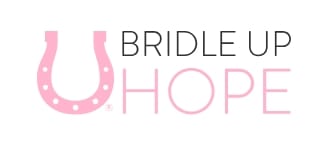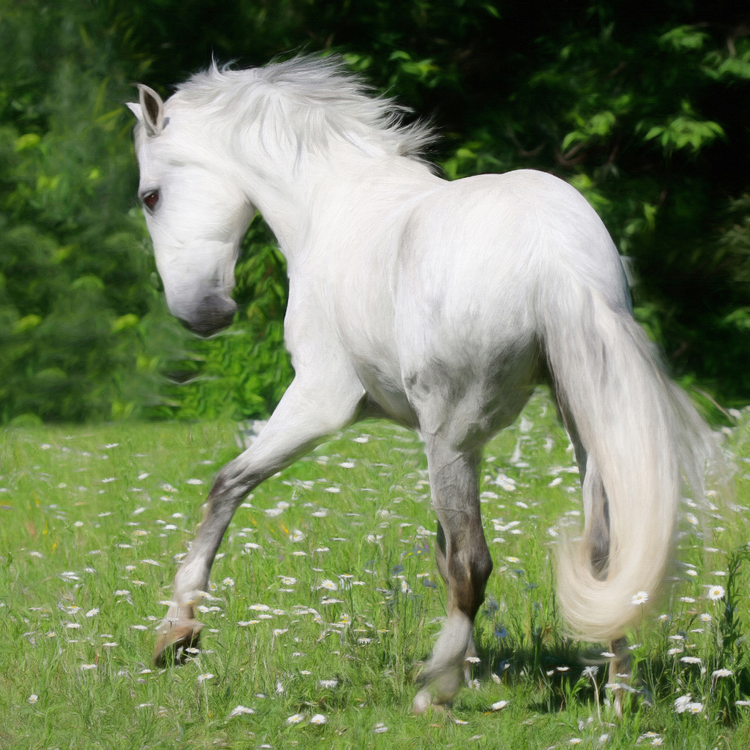Irish Horsemanship from a Western Perspective

As an American Paint Horse and American Quarter Horse Professional Horseman and California Import, I’ve spent the past two years deeply curious about the new equestrian world of Ireland and Northern Ireland that I've found myself in. Unlike the sports of Showjumping and Eventing where a show would consist of one event, I've grown up at breed shows, where all competitors are showing one breed in many different events, from english to western, to driving and in-hand. I’m thrilled to be given the opportunity by Equitas to share my unique perspective, and I truly hope readers will gain as much from viewing my world, as I have from peeking into theirs.
So today I wanted to share my training method which I believe benefits horses across disciplines: Introducing the 6 Steps to Better Horsemanship— designed to holistically approach horsemanship and create training in our horses that’s built on understanding and trust. This method has brought me success with horses of many different breeds and backgrounds, from rescue cases to future World Champions. As you apply any of my methods please keep in mind, training is futile in a horse without being sure he’s sound, his feet are balanced, his teeth aren’t sharp, and he’s ulcer free. Please consult your vet before making major changes.
1. Groundwork: Building Clear Expectations
In western horsemanship, we know that success in the saddle begins long before you mount up. Groundwork is where trust and communication start. It’s creating a language between you and your horse. Understanding Operant Conditioning is a great place to start. Most traditional horsemanship is negative reinforcement, commonly referred to as pressure training. In pressure training we introduce an uncomfortable stimulus, then when the horse completes the behavior remove the uncomfortable stimulus. For example, I pull my lead rope to the left and keep my pressure steady until my horse turns his neck and creates slack in the rope. At that point I release all rope tension.
Through groundwork, you lay the foundation for your horse to understand the riding cues you will introduce in the future. An added bonus is that you will become your vet and farriers favorite client for having safe and obedient horses to work with. If you have no familiarity with groundwork there are several natural horsemanship methods with online courses which are great starting points.
I can’t recommend finding your local Certified Parelli Trainer enough, we are lucky enough to have Chris and Sarah Brady on the island.
2. Rider Centering: Find Your Balance
Rider Centering is a simple term for the very intricate process of building a rider's balance and connection in the saddle. For me, balance goes way beyond your ability to not fall off, it’s finding suppleness and connection while centering your weight to be least intrusive and beneficial to your horse’s way of going. I find many of the local riders I have worked with to be incredibly brave horsemen, but I often find they are holding a tension as they ride which communicates to their horse. What I would love to see in my riders is a straight line from ear, to shoulder, to hip, to heel. I like to imagine if I could wave my magic wand and make their horse disappear they would still land balanced on their feet.
Additionally, I want to see riders connect through their pelvis to move within the horse’s motion and completely relax their leg, allowing it to hang and fall naturally around the horse’s barrel. It’s about being aware of your posture, your core connection, and your mental focus.
I often have riders come to me wanting help with a horse that dives to the center, but more often I find the rider sets their weight unevenly on their inside foot so for balance their horse is kindly coming to meet them. To correct the horse would be unnatural and unfair, and as riders we have a responsibility to be our best for our horses. For a deeper understanding, one of my favorite resources is the book Centered Riding by Sally Swift.
"Balance goes way beyond your ability to not fall off."
3. Rhythm While Riding: The Basis of a Correct Gait
Every great ride has a rhythm, much like a well-choreographed dance. When we learn to ride with a following seat, riding within the rhythm of each step, we can connect to our horse and start making maneuvers look magical. To be correct, whether you ride English or Western, the walk must be a four-beat gait, the trot or jog a two-beat gait, and the canter or lope must be three beats. For any horse I sit on, my first goal is to establish those rhythms clearly within each gait. As a rider, I must also ride within the rhythm. When we sit deep in our saddle and soften our hip bones, we notice our hips move in little backwards circles, one after the other, like pedaling a bike backwards within the horse’s rhythm. I often play games with my green horses where I’ll add energy through my hips at the bottom of the hip’s circle and attempt to lengthen the stride within the rhythm and then tighten my hip circles and ask my horse to collect. Eventually I can use this rhythm together to create fluid transitions and invisible cues. It’s about finding that groove where both you and your horse are in sync, creating a seamless and graceful riding experience.
4. Forward Motion and Impulsion: Driving from the Hind
I often tell my riders it takes a lot of forward motion to go slow. Unfortunately, in my industry a lot of our exhibitors tend to focus on the slow speed of their horse and not the impulsion behind. Before we go slow and collect we must have a horse that’s driving deep into the motion. When we picture collection, many riders imagine a tight stride and pull their horse from front to back to achieve the desired stride length. I would like to encourage the reverse. Your horse’s ideal collected shape is a rainbow; lifted back, tucked in hind, level or slightly above level neck. To achieve this, start by building a deep step in the horse’s hind feet to encourage his abs to engage and lift his back, then as you build suppleness to your hand you can ask him to stretch down and out in his head and neck. Impulsion is the driving force behind this movement, providing the power needed for more complex maneuvers. For example, a horse that is not driving deep from behind cannot execute a correct lead change, and more often he will change leads in front before he changes behind. So before we ask for a lead change from a collected gate, we must lope or canter with extension, driving the forward motion from behind.
"Before we go slow and collect we must have a horse that’s driving deep into the motion."
5. Horse Suppleness: Resistance Free Horses
A supple horse is a responsive horse. When showing AQHA and APHA, we often refer to resistance in horses. Our judges are looking for a horse free of resistance, who feels us apply our aids and softens to it, saying “yes ma'am”. Suppleness refers to your horse’s ability to bend, move freely and soften to pressure. As I’ve worked with a handful of showjumpers, I’ve found a commonality that many riders are relying on their own strength, instead of their horse’s suppleness to maneuver around a corner or tighten a stride. I would suggest the inverse, slowly build the desired behavior by applying rein pressure, even at walk or halt, and asking your horse for the smallest give to the pressure. Start small and slow, then build to a moment when you can effortlessly move together toward your goal, versus a horse resisting and working against you. For example, in western I am often riding one handed so starting at a halt I lift my hand up towards my belly button slowly and steadily, the moment my horse attempts to move his mouth down toward my hand, I release. I do this so eventually when I’m on course riding a pattern, if my horse becomes unfocused all I need to do is lift up and the horse falls in place right underneath me.
6. Horse and Rider Contact: Connection Through Aids
Finally, we arrive at contact—the link between horse and rider. This is where all your training and groundwork come together. Whether your goal is winning the Western Horsemanship or a dressage test, effective contact means clear, consistent communication between you and your horse through reins, legs, and seat. It’s about balancing your aids. When we have sent the horse forward and built suppleness to pressure, we start to ask our horses - English or Western - to come onto our contact, expecting the horse to stay a half halt (or squeezing of our fingers) away from our rein pressure. I want my horses ready to give to pressure at any moment. The same is true for my leg. When I have a horse that clearly understands how to move forward off my legs and move away from a single leg then I want to be able to wrap my leg on my horse and ask him to step up into contact with my hand. This is the final step for me in developing my horses as its success comes from the accumulation of all the previous skills listed.
Though there are key differences between my experiences showing Paint and Quarter horses and what I see in Ireland, I’m often surprised how similar all equestrian sports can be. At the end of the day, we are all looking for a correct horse, respectful and easy to handle on the ground, and using themselves in a way that will increase their longevity.
No matter the discipline I hope you find value in my method for horse development and these six steps have proven crucial for me in reaching all sorts of goals with mine and my client’s horses.





